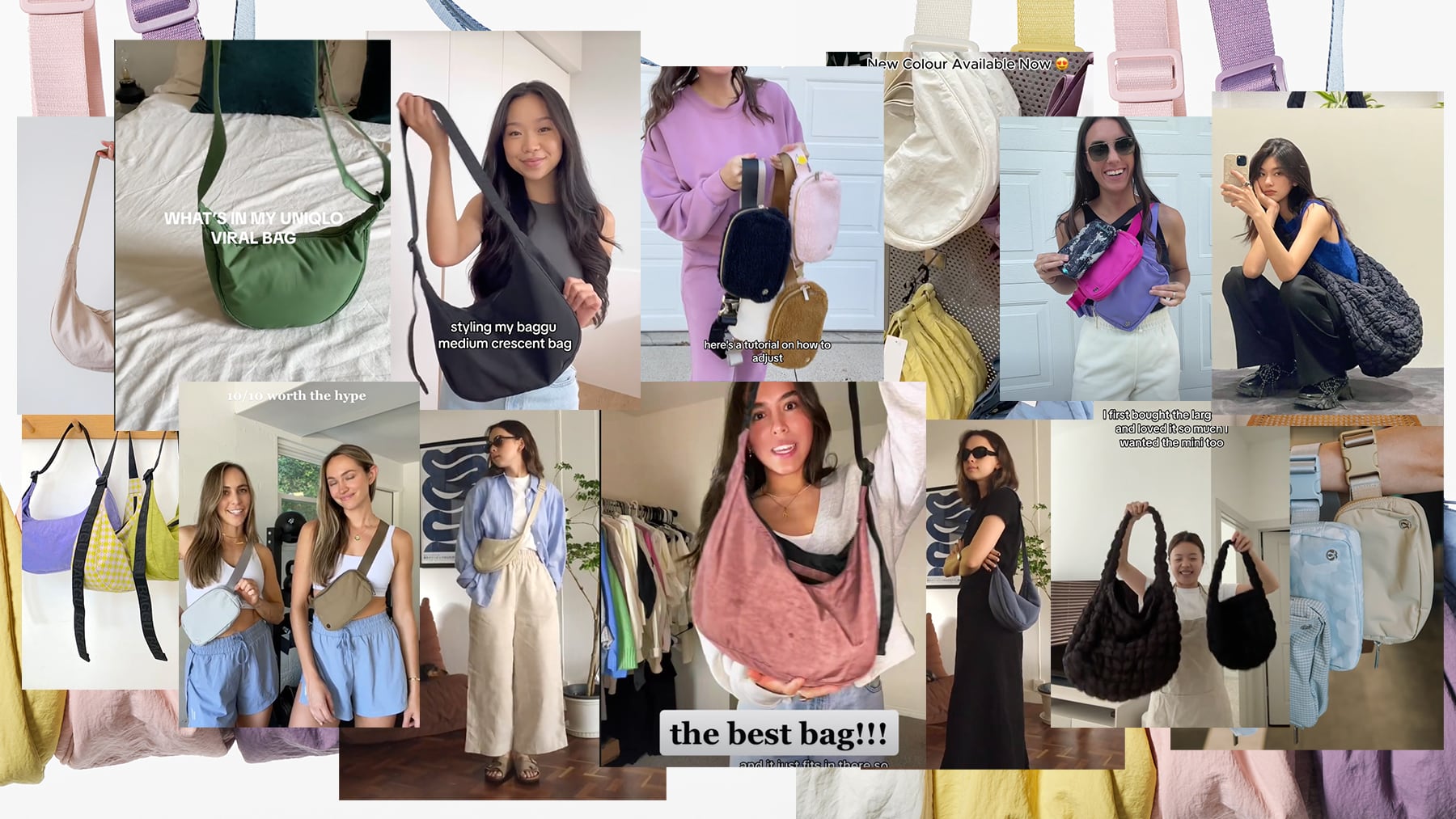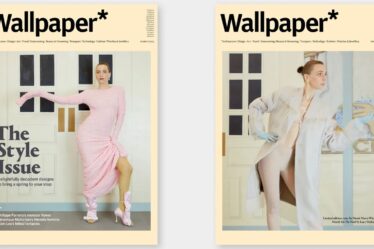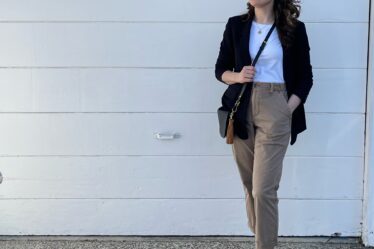
Getting your hands on an ‘It’ bag has never been easier.
The unofficial title is typically reserved for pricey carryalls like the Hèrmes Birkin, the Chanel classic flap and Fendi baguette that are coveted by many, but affordable (or even available) to relatively few.
The nylon bag has changed all of that. Made from tough, artificial fabric and designed to be thrown on to run errands or stuffed into a suitcase, the likes of Lululemon’s Belt Bag and Baggu’s Nylon Crescent Bag are in many respects the anti-Birkin. That goes for price too: the Cos Quilted Bag, currently No. 3 on Lyst’s index of the most-searched fashion items, tops out at $135; the (also quilted) Chanel 2.55 will set you back over $10,000. Uniqlo sometimes gives away its Round Mini Shoulder bag, Lyst’s bag of the year in 2023, with another purchase.
The exploding popularity of cheap, utilitarian bags comes at a time when ‘It’ bags on the other end of the spectrum have become much harder for ordinary consumers to buy. Chanel has more than doubled prices on some items since 2019, according to handbag website Purse Blog, while Louis Vuitton has increased some bags’ prices by 40 percent.
The style’s rise has allowed new brands to enter the handbag conversation. While Uniqlo and other brands don’t break out individual product sales, they are almost certainly significant: earlier this month, the Japanese fast-fashion retailer sued Shein, alleging its rival was selling copies of its shoulder bag.
For customers priced out of the traditional bag market, a Uniqlo crossbody in the right colour can help fill the status symbol void, for under $20. And unlike a Birkin, they’re machine washable.
“Consumers are realising that you don’t have to spend a ton of money to get something that does the job and still looks pretty cool and works for multiple occasions within your life,” said Kendall Becker, fashion director at trend forecasting firm Trendalytics.
What’s the allure of the nylon bag?
Nylon has a long history as a status fabric – nylon stockings were an immediate sensation when they were introduced at the 1939 World’s Fair in New York. Prada introduced its nylon backpack in 1984 and has been designing products around the sturdy fabric ever since. For Prada and other luxury brands, including The Row, nylon accessories are a popular entry level purchase (relatively speaking; both sell bags made from the material for around $1,300).
The nylon bag’s appeal lies in its simplicity.
“People took it as a core essential of their life and really try to use it as a staple within the wardrobe, an everyday product,” said Nicolas Cessot, head of brand, product and digital marketing at Uniqlo.
They also appeal to other of-the-moment trends. While a $20 bag doesn’t qualify as quiet luxury, the subtle, even humble approach to a trending bag, with few logos and a no-frills design in a low-maintenance fabric, scratches the same itch, while providing an “if you know, you know” factor.
The bags also fit neatly into the athleisure trend, as they won’t look out of place in the workout studio or to brunch.
The bags are also cheap enough to be collectable, with brands regularly introducing new iterations once a style takes off. Cos’s quilted bag adds a unique design element. Uniqlo sells its crossbody in nine colours, as well as limited-edition versions, including one made of faux leather and designed by Clare Waight Keller. Lululemon’s belt bag comes in 10 colours, including hot pink and yellow. Baggu collaborated with New York designer Sandy Liang on a version of the Crescent Bag that was adorned with the designer’s signature bows.
“We seduce you with the cool vibe, but at the end of the day, it’s just like a really good bag that makes carrying your shit easier,” said Emily Sugihara, founder of Baggu, whose nylon Crescent Bag has benefitted from the trend.
While most of these bags have a simple design, they are usually still recognisable enough to be instantly identified with their maker. Uniqlo regularly gives away its shoulder bag because its power as a marketing tool is just as important as the sales the items themselves generate, said Cessot.
“People recognise our brand through this bag,” he said. “We can use it to acquire new customers and drive the bag’s momentum but also continue brand growth in the US.”
What does the nylon bag’s success say about the wider bag market?
In the face of wider economic uncertainty, luxury brands are focusing their attention on their wealthier customers. Brands would rather sell one top client a more expensive handbag than sell a number of aspirational customers entry-level leather goods.
Nylon bags appeal not only to the deal-seeking consumer, but also younger, aspirational consumers that want an easy option — and are finding luxury brands increasingly out of reach. Where those customers might once have settled for a mid-market bag from a department store, now they’re more interested in something that’s both fashionable and a good bargain.
“There is still that desire for nicer handbags for a night out,” said Aoife Byrne, senior analyst at retail analytics firm Edited. “They can still do well, but it’s probably a hard time to stand out with that product.”
Like all trends, the nylon crossbody craze will eventually burn out. Some brands are already preparing: After the Crescent Bag took off, Baggu introduced a similar style, the Shoulder Bag, a 1990s-inspired take on the nylon bag trend. Uniqlo will release a crochet version of the bag this February.
“The key now is to make those bags just a little bit more interesting,” said Becker. “Whether that be quilting, new seasonal colourways or adding bag accessories, like keychains, it just brings a little bit something extra and a little more element of interest to it.”



